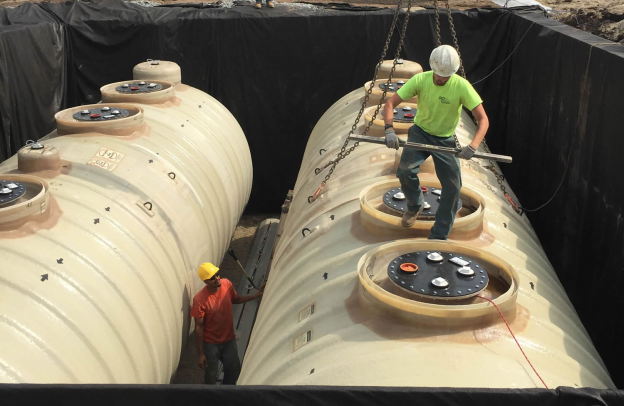Most gas stations in the U.S today sell E10 gasoline under the Clean Air Act (RFG Fuel) and the Renewable Fuel Standard compliance directive.

While E10 gasoline is certainly better for the environment compared to pure gasoline, it presents handling and storage challenges for gas station owners, most notably in the form of phase separation.
What is phase separation?
Phase separation occurs when water enters a fuel tank that contains an ethanol-blended- gasoline fuel. The water molecules pull the ethanol molecules out of the gasoline, creating two distinct phase layers in the tank: a gasoline-only layer at the top and a water/ethanol layer at the bottom.
There are three “potential” negative effects of phase separation:
- It can lower the octane value of your fuel stock
- It can damage your UST system by corroding the storage tank, submersible pumps, and pipes
- It can damage your customers’ vehicles and impact the image of your business negatively
It’s, therefore, imperative that as a gas station owner you must do everything to prevent water from contaminating your fuel stock.
In an ideal operation that’s certainly possible, however, in the real world water contamination inside fuel tanks is an eventuality. No matter how strict your protocols are, water will always somehow enter your storage tank.
That’s why industry experts recommend having phase separation detection methods in place at your refueling facility.
Phase separation detection methods
Phase separation in fuel tanks can be detected by:
- Using ATG monitoring system. This method, however, has a limitation since it may not always be able to detect the separation layer, especially if water is sitting at the bottom of the tank.
- Sticking the tank with water-finding paste. However, the reliability and accuracy of this method is heavily reliant on the regularity of the practice.
Most gas station owners pair the two detection methods to detect phase separation reliably, and as early as it may happen inside their fuel tanks.
Are you equipped to detect phase separation at your gas station?
If not, the John W. Kennedy Company can provide you with quality phase detection products and equipment for your gas station.
Get in touch with us today to learn more.




